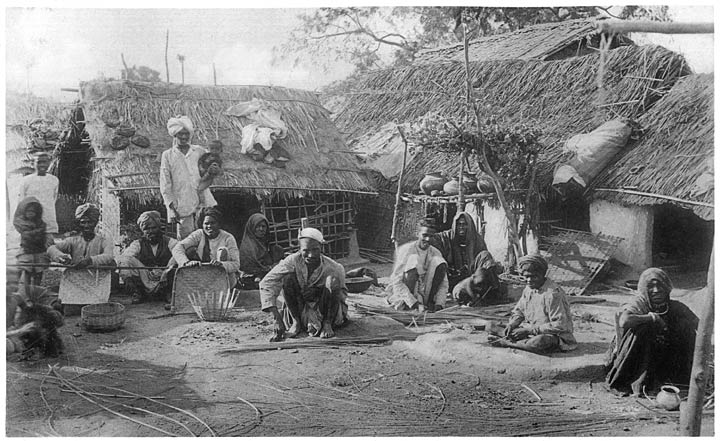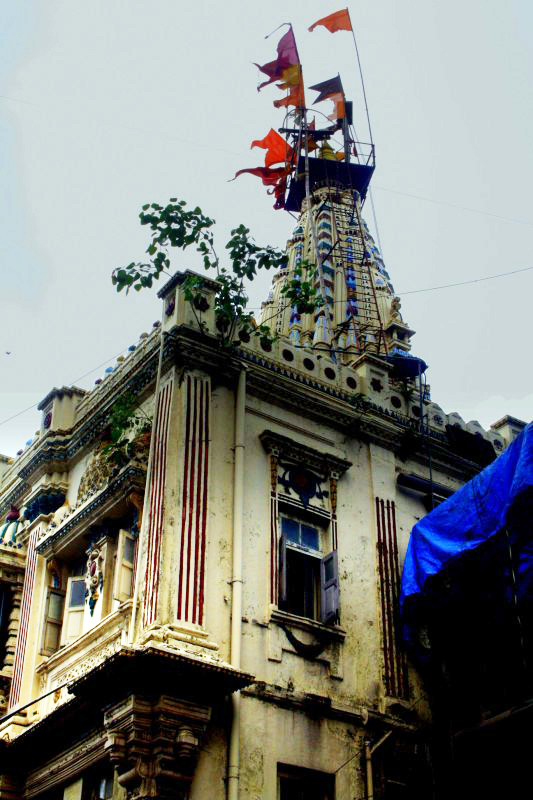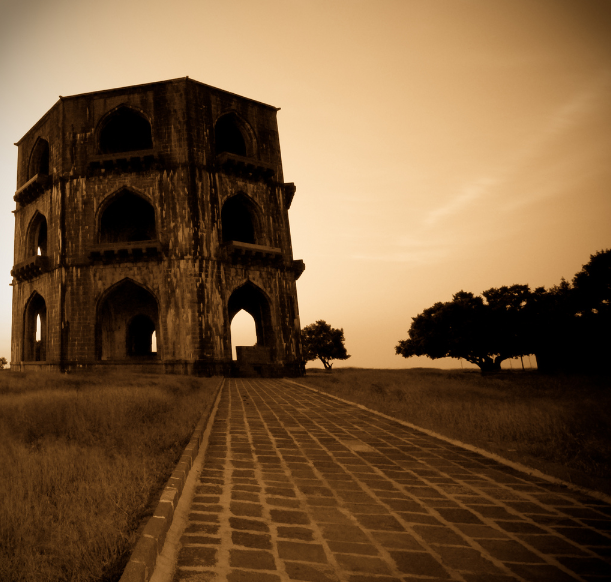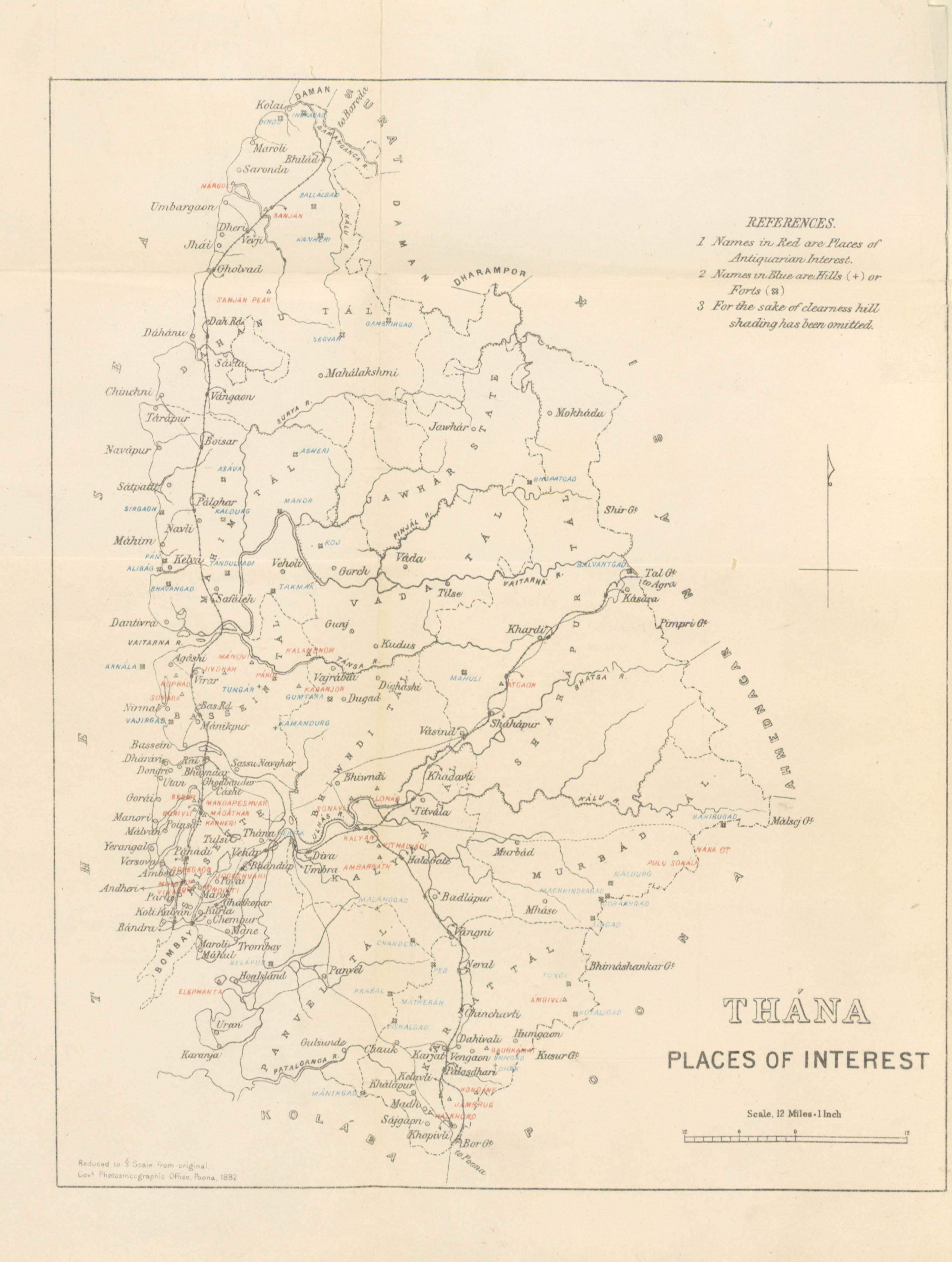|
Bharbhunja (Hindu)
The Bharbhunja are a largely Hindu caste found in North India and Maharashtra. They are also known as Kalenra in Maharashtra, Mehra in Punjab and in Uttar Pradesh. A small number are also found in the Terai region of Nepal.People of India Hayana Volume XXIII edited by M.L Sharma and A.K Bhatia pages 73 to 75 ManoharPeople of India Maharshtra Volume XXX Part One edited by B.V Bhanu, B.R Bhatnagar, D.K Bose, V.S Kulkarni and J Sreenath pages 280-286 Origin The Bharbhunja derive their name from the Hindi word ''bhunja'', which means gram, and the community was involved with roasting gram. They were said to have originally belonged to the Jhinwar caste, but split off from them when they took to roasting gram. There is no intermarriage between the two communities now. The majority of the Bharbhunja are Hindu, except a section in Gujarat and Uttar Pradesh, who form a separate community of Muslim Bharbhunja. A small number in Punjab and Haryana . Those in Haryana and Punjab spea ... [...More Info...] [...Related Items...] OR: [Wikipedia] [Google] [Baidu] |
Hindi Language
Hindi (Devanāgarī: or , ), or more precisely Modern Standard Hindi (Devanagari: ), is an Indo-Aryan language spoken chiefly in the Hindi Belt region encompassing parts of northern, central, eastern, and western India. Hindi has been described as a standardised and Sanskritised register of the Hindustani language, which itself is based primarily on the Khariboli dialect of Delhi and neighbouring areas of North India. Hindi, written in the Devanagari script, is one of the two official languages of the Government of India, along with English. It is an official language in nine states and three union territories and an additional official language in three other states. Hindi is also one of the 22 scheduled languages of the Republic of India. Hindi is the ''lingua franca'' of the Hindi Belt. It is also spoken, to a lesser extent, in other parts of India (usually in a simplified or pidginised variety such as Bazaar Hindustani or Haflong Hindi). Outside India, ... [...More Info...] [...Related Items...] OR: [Wikipedia] [Google] [Baidu] |
Gujarati Language
Gujarati (; gu, ગુજરાતી, Gujarātī, translit-std=ISO, label=Gujarati script, ) is an Indo-Aryan language native to the Indian state of Gujarat and spoken predominantly by the Gujarati people. Gujarati is descended from Old Gujarati (). In India, it is one of the 22 Languages with official status in India, scheduled languages of the Union. It is also the official language in the state of Gujarat, as well as an official language in the union territory of Dadra and Nagar Haveli and Daman and Diu. As of 2011, Gujarati is the List of languages by number of native speakers in India, 6th most widely spoken language in India by number of native speakers, spoken by 55.5 million speakers which amounts to about 4.5% of the total Indian population. It is the List of languages by number of native speakers, 26th most widely spoken language in the world by number of native speakers as of 2007.Mikael Parkvall, "Världens 100 största språk 2007" (The World's 100 Largest ... [...More Info...] [...Related Items...] OR: [Wikipedia] [Google] [Baidu] |
Social Groups Of Uttar Pradesh
Social organisms, including human(s), live collectively in interacting populations. This interaction is considered social whether they are aware of it or not, and whether the exchange is voluntary or not. Etymology The word "social" derives from the Latin word ''socii'' ("allies"). It is particularly derived from the Italian ''Socii'' states, historical allies of the Roman Republic (although they rebelled against Rome in the Social War of 91–87 BC). Social theorists In the view of Karl MarxMorrison, Ken. ''Marx, Durkheim, Weber. Formations of modern social thought'', human beings are intrinsically, necessarily and by definition social beings who, beyond being "gregarious creatures", cannot survive and meet their needs other than through social co-operation and association. Their social characteristics are therefore to a large extent an objectively given fact, stamped on them from birth and affirmed by socialization processes; and, according to Marx, in producing and reproducin ... [...More Info...] [...Related Items...] OR: [Wikipedia] [Google] [Baidu] |
Khari Boli
Kauravi ( hi, कौरवी, ur, ), also known as Khaṛībolī is a set of Western Hindi varieties of Shauraseni Prakrit mainly spoken in Northwestern Uttar Pradesh. Standard Hindi and Urdu are based on Khariboli, specifically on its Dehlavi dialect( Old Hindi), becoming the Hindustani language of the Ganga-Jamuni Tehzeeb. Hindustani gained prestige when it was accepted along with Persian as a language of the court, before that it was only a sociolect of the ruling classes and a language the Persianate states spoke to their subjects in. Modern Kauravi contains some features, such as gemination, which give it a distinctive sound and differentiates it from Braj, Awadhi and Hindustani. An early form of Kauravi became the main basis of Old Hindi, which subsequently developed into Hindustani and then into Hindi and Urdu. Geographical distribution Khariboli is spoken in the rural surroundings of Delhi and northwestern Uttar Pradesh, as well as in some neighbouring are ... [...More Info...] [...Related Items...] OR: [Wikipedia] [Google] [Baidu] |
Kurmi
Kurmi is traditionally a non-elite tiller caste in the lower Gangetic plain of India, especially southern regions of Awadh, eastern Uttar Pradesh and parts of Bihar. The Kurmis came to be known for their exceptional work ethic, superior tillage and manuring, and gender-neutral culture, bringing praise from Mughal and British administrators alike. Etymology There are several late-19th century theories of the etymology of ''Kurmi''. According to Jogendra Nath Bhattacharya (1896), the word may be derived from an Indian tribal language, or be a Sanskrit compound term ''krishi karmi'', "agriculturalist." A theory of Gustav Salomon Oppert (1893) holds that it may be derived from ''kṛṣmi'', meaning "ploughman". History Eighteenth and nineteenth centuries With the continued waning of Mughal rule in the early 18th century, the Indian subcontinent's hinterland dwellers, many of whom were armed and nomadic, began to appear more frequently in settled areas and interact wi ... [...More Info...] [...Related Items...] OR: [Wikipedia] [Google] [Baidu] |
Castes
Caste is a form of social stratification characterised by endogamy, hereditary transmission of a style of life which often includes an occupation, ritual status in a hierarchy, and customary social interaction and exclusion based on cultural notions of purity and pollution. * Quote: "caste ort., casta=basket ranked groups based on heredity within rigid systems of social stratification, especially those that constitute Hindu India. Some scholars, in fact, deny that true caste systems are found outside India. The caste is a closed group whose members are severely restricted in their choice of occupation and degree of social participation. Marriage outside the caste is prohibited. Social status is determined by the caste of one's birth and may only rarely be transcended." * Quote: "caste, any of the ranked, hereditary, endogamous social groups, often linked with occupation, that together constitute traditional societies in South Asia, particularly among Hindus in India. Although ... [...More Info...] [...Related Items...] OR: [Wikipedia] [Google] [Baidu] |
Parched Grain
Parched grain is grain that has been cooked by dry roasting. It is an ancient foodstuff and is thought to be one of the earliest ways in which the hunter gatherers in the Fertile Crescent ate grains. Historically, it was a common food in the Middle East, as attested by the following Bible quotes: *"On the day after the Passover, on that very day, they ate some of the produce of the land, unleavened cakes, and parched grain." *"Now Boaz said to her at mealtime, 'Come here, and eat of the bread, and dip your piece of bread in the vinegar.'" So she sat beside the reapers, and he passed parched grain to her; and she ate and was satisfied, and kept some back." It is known in Hebrew as קָלִי (''qālî''). The grain has the same length of the normal grain, although somewhat thinner and darker with a green shade. It is served as a casserole hot dish, cooked with morsels of meat or poultry. Use as a Camp Ration A variety of parched grains have been used historically as a ... [...More Info...] [...Related Items...] OR: [Wikipedia] [Google] [Baidu] |
Mumbai
Mumbai (, ; also known as Bombay — the official name until 1995) is the capital city of the Indian state of Maharashtra and the ''de facto'' financial centre of India. According to the United Nations, as of 2018, Mumbai is the second-most populous city in India after Delhi and the eighth-most populous city in the world with a population of roughly 20 million (2 crore). As per the Indian government population census of 2011, Mumbai was the most populous city in India with an estimated city proper population of 12.5 million (1.25 crore) living under the Brihanmumbai Municipal Corporation. Mumbai is the centre of the Mumbai Metropolitan Region, the sixth most populous metropolitan area in the world with a population of over 23 million (2.3 crore). Mumbai lies on the Konkan coast on the west coast of India and has a deep natural harbour. In 2008, Mumbai was named an alpha world city. It has the highest number of millionaires and billionaires among all ... [...More Info...] [...Related Items...] OR: [Wikipedia] [Google] [Baidu] |
Ahmednagar
Ahmednagar (), is a city located in the Ahmednagar district in the state of Maharashtra, India, about 120 km northeast of Pune and 114 km from Aurangabad. Ahmednagar takes its name from Ahmad Nizam Shah I, who founded the town in 1494 on the site of a battlefield where he won a battle against superior Bahamani forces. It was close to the site of the village of Bhingar. With the breakup of the Bahmani Sultanate, Ahmad established a new sultanate in Ahmednagar, also known as Nizam Shahi dynasty. Ahmednagar has several dozen buildings and sites from the Nizam Shahi period. Ahmednagar Fort, once considered almost impregnable, was used by the British to house Jawaharlal Nehru (the first prime minister of India) and other Indian Nationalists before Indian independence. A few rooms there have been converted to a museum. During his confinement by the British at Ahmednagar Fort in 1944, Nehru wrote the famous book '' The Discovery of India''. Ahmednagar is home to the Ind ... [...More Info...] [...Related Items...] OR: [Wikipedia] [Google] [Baidu] |
Thane
Thane (; also known as Thana, the official name until 1996) is a metropolitan city in Maharashtra, India. It is situated in the north-eastern portion of the Salsette Island. Thane city is entirely within Thane taluka, one of the seven talukas of Thane district; also, it is the headquarters of the namesake district. With a population of 1,841,488 distributed over a land area of about , Thane city is the 15th most populated city in India with a population of 1,890,000 according to the 2011 census. Located on the northwestern side of the state of Maharashtra, the city is an immediate neighbour of Mumbai city and a part of the Mumbai Metropolitan Region. Etymology and other names The ancient name of Thana was . It appears as in early medieval Arab sources. The name Thane has been variously Romanised as Tana, Thana, Thâṇâ, and Thame. Ibn Battuta and Abulfeda knew it as KukinTana; Duarte Barbosa as TanaMayambu. Before 1996, the city was called 'Thana', the British sp ... [...More Info...] [...Related Items...] OR: [Wikipedia] [Google] [Baidu] |





